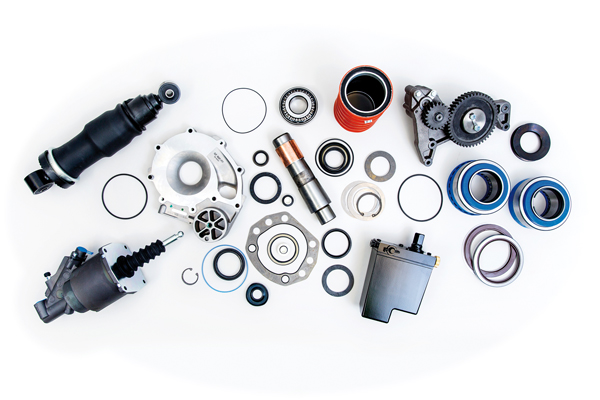Extending Equipment Lifespan and Environmental Benefits With Aftermarket Parts
Mikael Kronstrand, Area Sales Manager,
Swedish Lorry Parts
Special Collaboration

In today's rapidly evolving technological landscape, businesses and individuals alike seek ways to maximize the lifespan of their equipment while also minimizing their impact on the environment. One effective solution lies in the utilization of aftermarket parts. These parts, created by
3rd-party manufacturers, offer numerous advantages that not only extend the lifespan of equipment but also contribute to a greener and more sustainable future.
Enhancing Equipment Lifespan
Aftermarket parts play a crucial role in extending the lifespan of various equipment types, such as automobiles, machinery, and electronic devices. Since aftermarket parts often come at a lower price point compared to original equipment manufacturer (OEM) parts. This affordability allows equipment owners to replace worn-out components economically, thereby prolonging the overall lifespan of their equipment.
Our aftermarket parts are designed to match or even exceed the specifications of OEM parts. They undergo rigorous testing and quality control processes, ensuring compatibility and reliability. By seamlessly integrating with the equipment, SLP parts help restore optimal performance and functionality, extending its lifespan.
OEM parts may become scarce or discontinued over time, especially for older equipment models. SLP aftermarket parts provide a wide range of options, ensuring that equipment owners can find suitable replacements, regardless of the equipment's age or rarity.
Environmental Benefits:
The use of aftermarket parts offers several environmental advantages, contributing to a sustainable future by utilizing aftermarket parts, equipment owners reduce the need for new manufacturing processes, thereby conserving valuable natural resources. Reusing and recycling existing equipment components minimizes the extraction of raw materials and the energy consumption associated with their production.
 The availability of aftermarket parts reduces the amount of equipment that would otherwise end up in landfills prematurely. Extending the lifespan of equipment through aftermarket components reduces waste generation and promotes a circular economy approach. The availability of aftermarket parts reduces the amount of equipment that would otherwise end up in landfills prematurely. Extending the lifespan of equipment through aftermarket components reduces waste generation and promotes a circular economy approach.
Manufacturing new equipment requires significant amounts of energy. By extending the lifespan of existing equipment with aftermarket parts, energy-intensive manufacturing processes and associated carbon emissions are avoided. This helps mitigate the environmental impact and combat climate change.
Quality and Warranty Considerations:
One common misconception about aftermarket parts is that they are of lower quality compared to OEM parts. However, reputable aftermarket manufacturers prioritize quality and reliability. They adhere to strict industry standards, employ advanced manufacturing techniques, and conduct rigorous testing to ensure their parts meet or exceed OEM specifications.
Additionally, many aftermarket parts come with warranties that provide reassurance to equipment owners in our case at SLP we offer a 3-year warranty. These warranties tend to cover defects in materials, giving users peace of mind and further boosting the value and reliability of aftermarket parts.
Customization and Performance Enhancements:
Another advantage of aftermarket parts is the opportunity for customization and performance enhancements. Equipment owners can choose from a wide array of aftermarket options that cater to specific needs and preferences. Whether it's upgrading engine components for increased horsepower or adding features for enhanced functionality, aftermarket parts allow equipment owners to tailor their equipment to their unique requirements.
Furthermore, aftermarket parts often benefit from advancements in technology and design, leading to improved performance and efficiency. Upgrading equipment with these aftermarket innovations can not only extend its lifespan but also enhance its overall performance and productivity.
Supporting a Diverse Marketplace:
The aftermarket parts industry fosters healthy competition and a diverse marketplace. It encourages innovation and pushes manufacturers to continuously improve their products. This competition results in a wider selection of parts, increased availability, and competitive pricing. Equipment owners have the freedom to choose from a variety of aftermarket suppliers, ensuring they find the best parts to meet their needs.
Conclusion:
In summary, aftermarket parts offer a multitude of advantages that extend the lifespan of equipment while benefiting the environment. With cost-effectiveness, compatibility, and availability, aftermarket parts enable equipment owners to maintain their equipment at a lower cost compared to OEM parts. Furthermore, the environmental benefits of resource conservation, waste reduction, and energy savings contribute to a more sustainable future. |